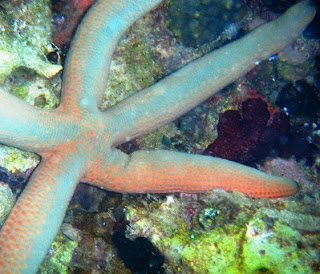Day out in the blue
We took a route up towards Funzi Bay to begin our search for dolphins. We were lucky enough to find a group of sixteen Indo-Pacific Bottlenose Dolphins (Tursiops aduncus) socialising. As we were away from the main tourist area, we were able to observe the dolphins undisturbed for 45 minutes. This allowed us to see some unusual behaviour and get lots of photographs that could be used later in photo identification of which individuals were present. When taking photos, we focus on the dolphins’ dorsal fin as this has unique and distinguishable marks and nicks that can be used to identify individuals and subsequently to analyse residency rates, social structure and associations between specific dolphins.

Bottlenose dolphin tail, in Funzi Bay
This mid-morning sighting was just as remarkable for the more experienced members of the marine team as it was for the newbies, and we were all slightly entertained observing dolphin mating rituals, involving 3 dolphins!Because of such high tides this week, we have been unable to return to Transect 9 to see if the six turtles we observed last week were still around; hopefully by the end of the week we will be able to, but until then we are happy snorkelling in the Kisite Marine Park with the stunning corals, sea stars and Moorish Idol fish.

Moorish Idol on transect 6

Star fish on transect 6
It’s always amazing to see the colourful angelfish and butterfly fish as they are indicator species whose presence indicates the health of the coral ecosystem and high biodiversity levels.With the expedition coming to an end, we will all be leaving with a better understanding of the importance of our oceans and the species that are dependent on them; it is critical this knowledge is spread and it has been so rewarding to know that we are all part of research and management initiatives that will help preserve and conserve the marine resource here for the future.












0 comments:
Post a Comment